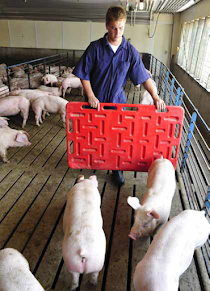This is the time of year when 4-H and FFA members begin looking for new livestock projects. When you do get that new project animal, that is the best time to start working on showmanship.
As you get your new animals, get them broke and start working on those showmanship basics. Walk them. It builds muscle and gets them used to being with you. They will learn how halters work or in the case of pigs, the cues of the show stick.
Brace them. It is easier to train sheep and goats to brace when they are small than after they have gained 40 or 50 pounds. When they are little it is easier to get the response you want and not be wrestling when they are bigger.
Make them stand still. Standing is going to happen during grooming and in the show ring. Teach calves, sheep and goats to stand tied to a sturdy structure and they will stand still when the lead is in your hands. And have them stand on grooming stands or in grooming chutes without the added distraction of grooming. Then as you begin grooming, they are comfortable with the grooming stand or chute, and the act of grooming is a small step and not a big one.
Practice grooming and working the hair or wool. Good “shag” starts early. Most livestock are not used to being touched, washed or blown dry. Biggest mistake I see is taking a brand new project animal and going straight to the wash rack and then grooming stand the first time. Introduce these things one at a time until they are not stressed by what you are doing.
And by the way, how’s your show box? Now is a good time to go through it. Clean it out. Repair or replace broken tack. Make a list of supplies you will need.
When that first show comes around, you will be more prepared and confident in you and your animal’s ability knowing you put in the work from the beginning. They won’t be perfect but start the showmanship work now and it will be easier later in the show ring.






